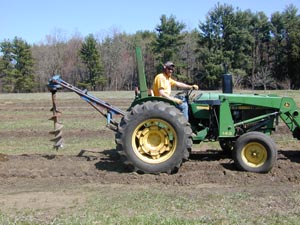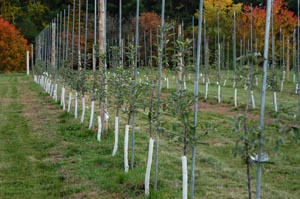|
Pictorial Guide to Planting an Orchard Renae E. Moran, M. Elena Garcia, Lorraine P. Berkett, Terence L. Bradshaw, Sarah Kingsley-Richards, Heather M. Darby, John P. Hayden, and Robert L. Parsons How to plant apple trees is one of the most often-requested pieces of information. The following are the steps that were taken to plant an apple orchard at the University of Vermont Horticultural Research Center, South Burlington, VT, and some of the steps during first-year maintenance. This orchard is part of a USDA Integrated Organic Program project and will be managed using organically-accepted methods (see important note at bottom of page). Please note that there are other options or other techniques that can be used to plant an orchard. This publication is solely intended to be a pictorial presentation of some of the options available to you.
|



















































